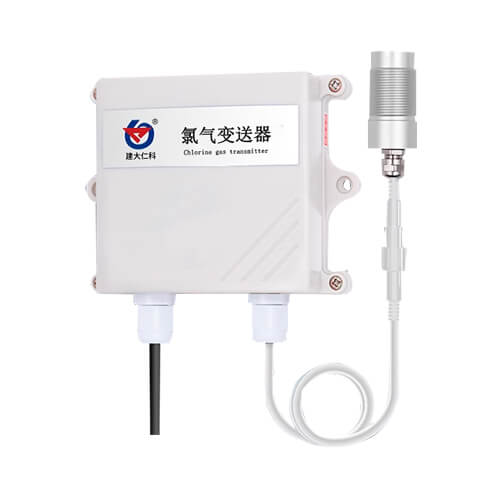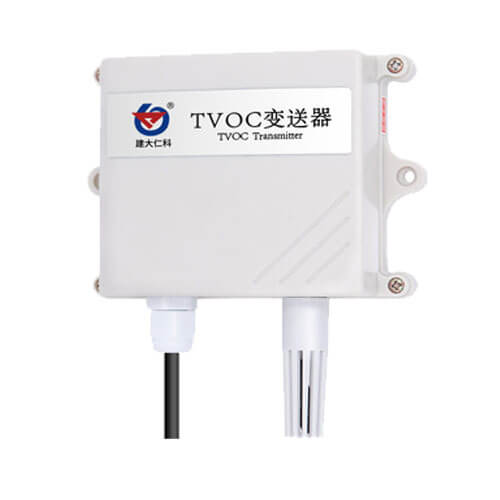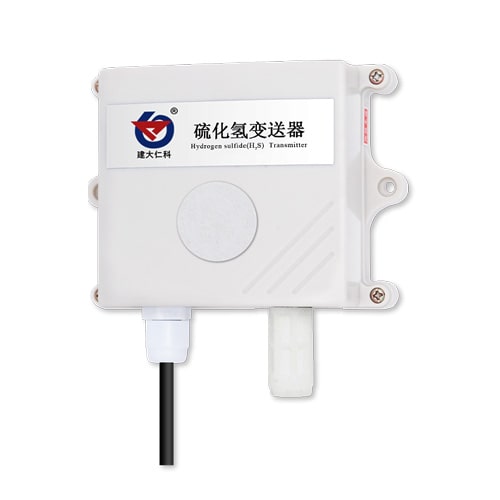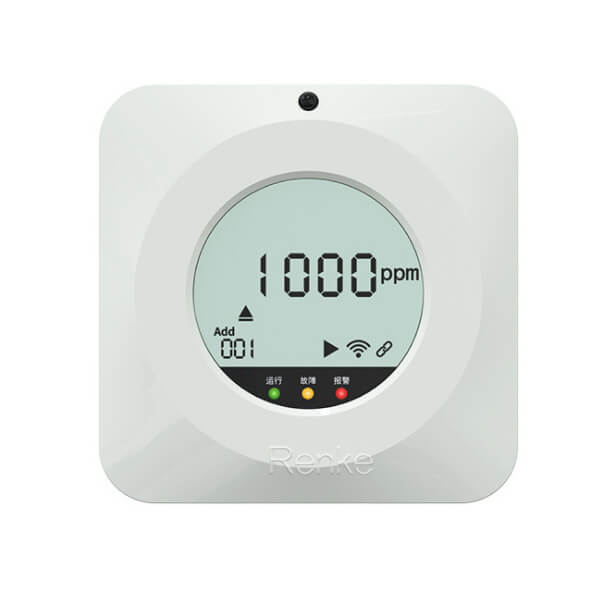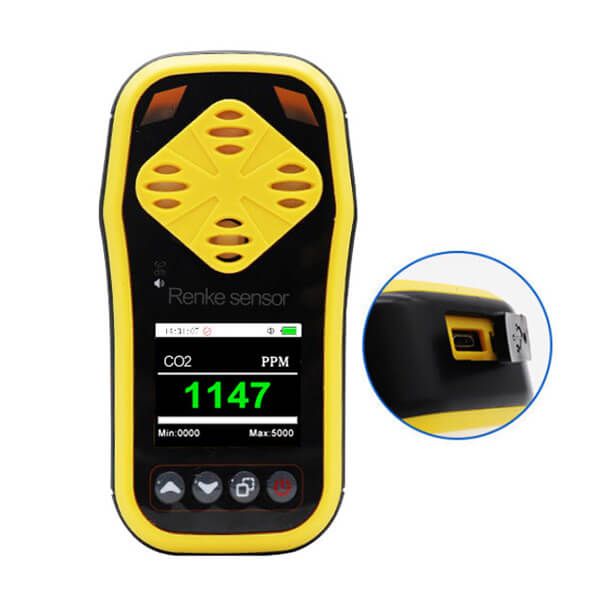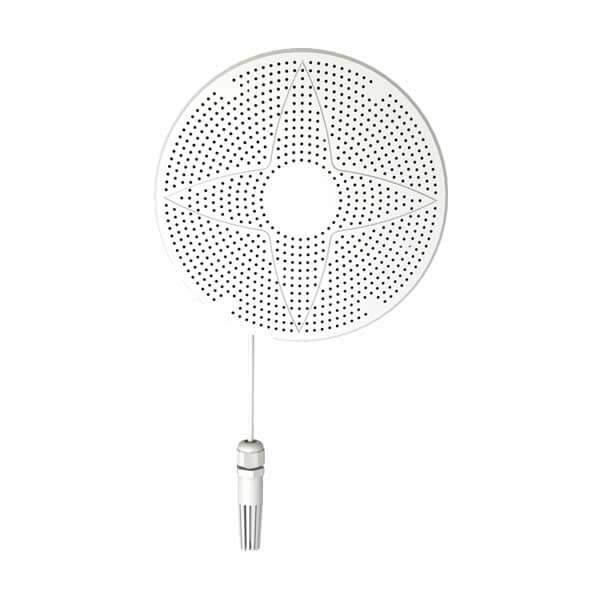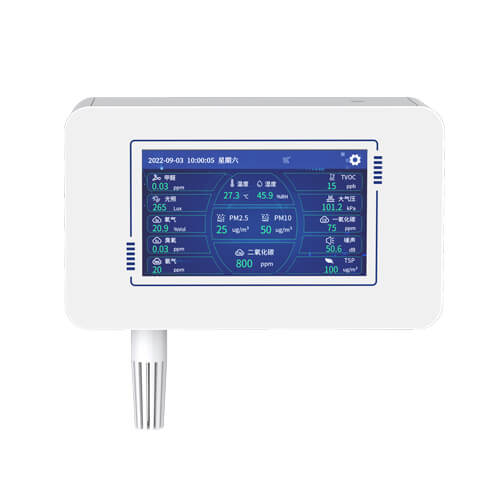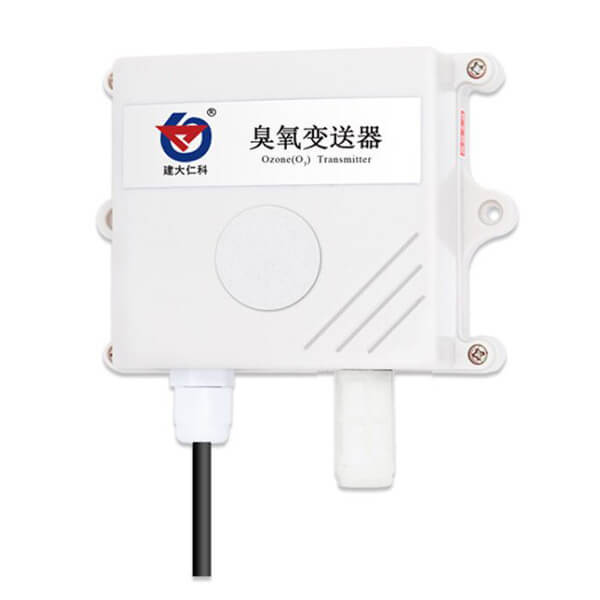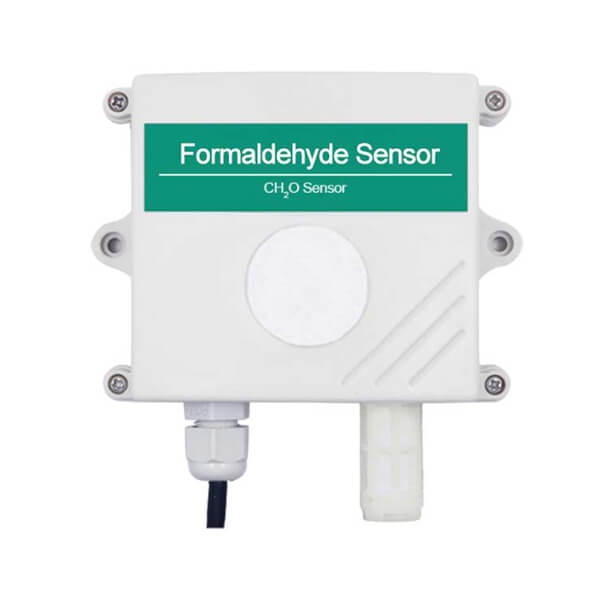Table of Contents What is ozone? Ozone gas is a trace gas in the atmosphere. At room temperature and pressure, ozone is colorless at lower
Chlorine Gas Sensor
Renke has developed a variety of chlorine gas sensors suitable for different environments, including wall-mounted chlorine gas sensor, duct type chlorine gas sensor and explosion-proof chlorine gas sensor. Multi wired and wireless output signal for your choose. Renke chlorine sensor can measure chlorine in the concentration range of 0~20ppm, 0~50ppm or 0~100ppm. Support customized OLED display, wire length and logo.
- Model: RS-CL2-*-*-EX
- MOQ: 1 PCS
- Delivery date: within 24 hours
- Price:$85.7~$197.2
Renke Chlorine Gas Sensors
The chlorine gas sensor developed by our company adopts electrochemical sensor. The measurement process is sensitive and anti-interference ability is strong. With our unique compensation algorithm and multi-segment standard gas calibration, the chlorine sensor is highly accurate and stable. The sturdy waterproof housing can effectively protect the sensor module, preventing the erosion of the sensor by soot and water vapor, and prolonging the service life. Suitable for workshops, chemical plants, electronic industry, closed living places and other occasions where real-time monitoring of chlorine concentration is required.
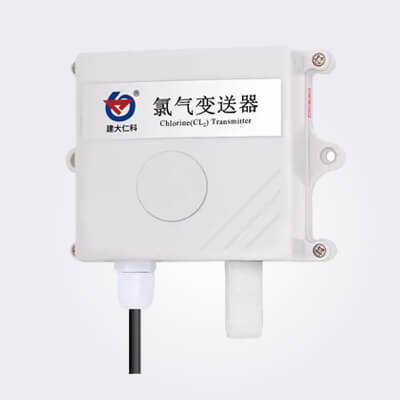
Standard wall-mounted king-shaped shell model with built-in probe for measuring chlorine gas.
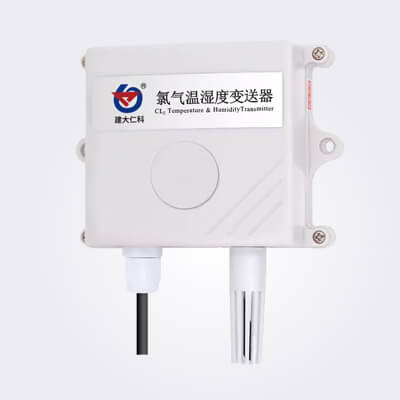
Built-in temperature and humidity sensor can measure temperature, humidity and chlorine simultaneously.
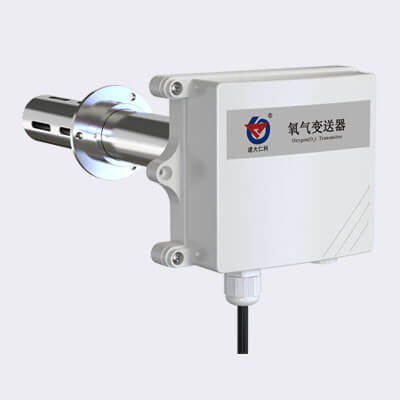
Duct type chlorine gas sensor is mainly used to measure chlorine gas concentration in closed pipelines.
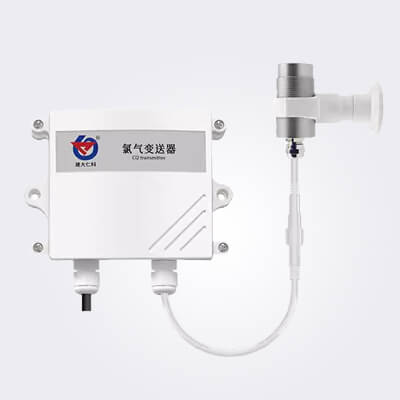
Wall-mounted chlorine gas sensor with extension probe.
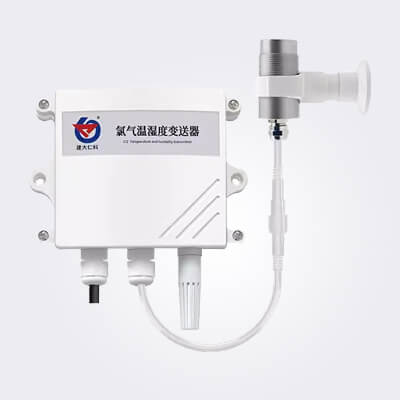
3 in 1 sensor with epitaxial probe for measurement of temperature, humidity and chlorine.
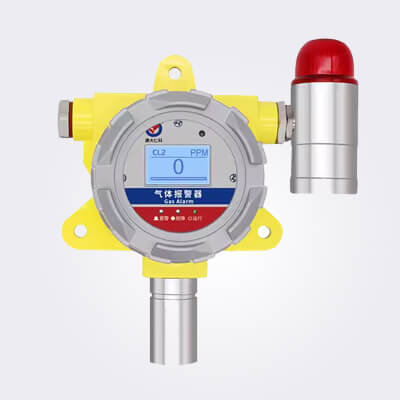
Explosion-proof chlorine gas sensor with sound and light alarm function.
Chlorine Gas Sensor Datasheet
| Power Supply | 10~30V DC |
| Output Signal | 4-20mA/0-5V/0-10V/RS485 |
| Power Consumption | 0.25W |
| Working Temperature | -20~50℃ |
| Working Humidity | 15~90%RH No Condensation |
| Pressure Range | 90~110kPa |
| Stability | ≤2% signal value/month |
| Chlorine Zero Drift | ±3%FS |
| Repeatability | ≤3% |
| Service Life | ≥24Months |
| Measurement Range | 0~20ppm/0~50ppm/0~100ppm |
| Accuracy | ±10% |
| Resolution | 0~100ppm:1ppm 0~20ppm/0~50ppm:0.1ppm |
| Response Time | ≤60s |
| Preheating Time | ≥5mins |
Three Types of Chlorine Gas Sensor
Chlorine is a toxic gas, excessive inhalation can lead to poisoning and death. Therefore, chlorine gas detectors should be installed in chlorine production, storage and use places for real-time monitoring. Once chlorine leakage is detected, timely measures will be taken. You can choose the right CL2 gas sensor according to your environment.
Wall mounted chlorine gas sensor
The Wall mounted chlorine gas sensor is mainly used to measure chlorine gas in the atmosphere, which diffuses through a waterproof breathable membrane into the interior of the device and is measured by the sensor. This chlorine gas sensor supports a wide range of customizations and can be added with an OLED screen to view data in real time. It is also possible to add specific epitaxial probes to measure the chlorine concentration in certain pipes. The default wire length of the extension probe is 80cm, and the maximum length can be 15m. In addition, it can be integrated with a temperature and humidity sensor to realize the three-in-one measurement of temperature, humidity and chlorine gas. This chlorine sensor is mainly used for real-time detection of chlorine concentration in factories, mines, chemicals, pharmaceuticals, material synthesis and environmental protection.
- Measure range: 0~20ppm, 0~50ppm or 0~100ppm
- Output signal: RS485/4-20MA/0-5V/0-10V/WIFI/LORA
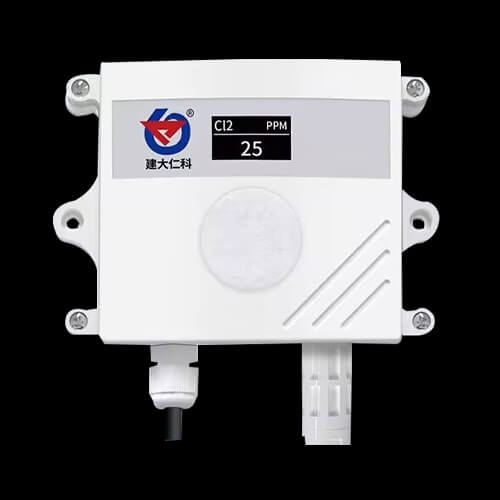
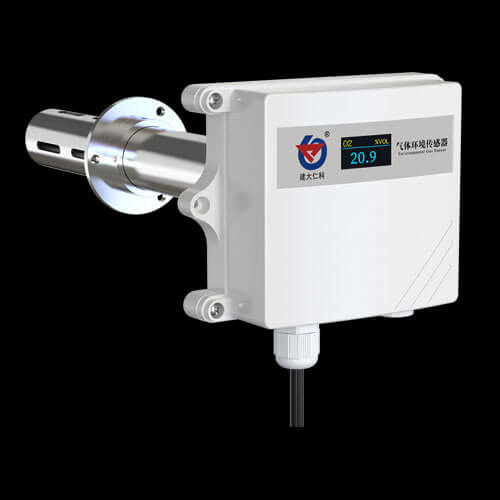
Duct type chlorine gas sensor
Duct type chlorine gas sensor is a specialized device for detecting the concentration of chlorine gas in closed pipelines. During installation, a hole is punched in the pipe and the stainless steel end is inserted into the pipe and secured. Stainless steel pipes have good corrosion resistance and can work in pipelines for a long time. Built-in waterproof rubber strip protects the sensor and increases its service life. The gas entering the stainless steel pipe diffuses through the waterproof breathable membrane and comes into contact with the sensor thus measuring the value. An OLED screen can be added to this device to view the data in real time on site. Other ranges can also be customized.
- Measure range: 0~20ppm, 0~50ppm or 0~100ppm
- Output signal: RS485/4-20MA/0-5V/0-10V/WIFI/LORA
Explosion-proof chlorine gas sensor
Explosion-proof chlorine gas sensor overall shell made of stainless steel, high-quality explosion-proof shell, waterproof and dustproof effect. Built-in industrial-grade electrochemical sensors, strong anti-interference ability, even in the flammable and explosive harsh environment can work. Equipment with liquid crystal display and sound and light alarm function. When the management personnel can not close contact with the equipment, they can configure the parameters through the infrared remote control function. This chlorine sensor supports customized range to meet the different needs of customers. Commonly used in gas stations, chemical plants, gas stations and other dangerous places.
- Measure range: 0~20ppm, 0~50ppm or 0~100ppm
- Output signal: RS485/4-20MA/0-5V/0-10V
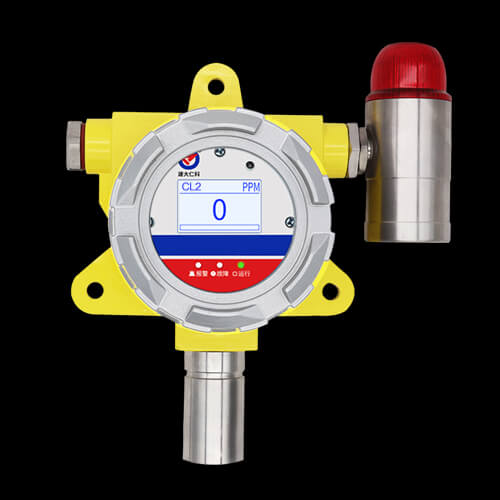
FAQ
Most chlorine gas sensors measure the concentration of chlorine in the environment via electrochemical principles.
Depending on the use environment, chlorine gas sensor can be categorized into wall-mounted, duct type, portable and explosion-proof.
Chlorine gas is a simple substance formed from the element chlorine, and its chemical formula is Cl2. It is a yellow-green toxic gas with a strong pungent odor.
Our chlorine gas sensor has a high measurement accuracy within ±10% and repeatability within 3%.
- Laboratory
Chlorine gas is one of the commonly used reagents in laboratories, and a leak could pose a serious threat to laboratory personnel and equipment. Therefore, the use of chlorine gas sensor in chemical laboratories can monitor the concentration of chlorine gas in time to prevent accidents. - Chemical Plant
Chlorine gas is widely used in chemical production, such as the production of plastics, dyes, disinfectants and so on. To prevent chlorine leakage, chlorine gas sensor needs to be installed for real-time monitoring. - Sewage Treatment Plants
Chlorine gas is often used in wastewater treatment plants for disinfection to kill harmful bacteria and viruses in wastewater. The use of chlorine gas sensor can help wastewater treatment plants monitor chlorine concentrations to ensure safety during the disinfection process, while also protecting the health of staff. - Agriculture
Chlorine gas can be used in agriculture for disinfection and pest control, but too much chlorine can also damage crops and pollute the environment. The use of chlorine gas sensor can help agriculturalists monitor chlorine concentrations and minimize the impact on crops and the environment.
Our chlorine sensors are factory calibrated and ready for use. After long-term use, please contact technicians for calibration.
1. Please do not use the device in systems involving personal safety.
2. Do not install the sensor in an environment with strong convection air.
3. The chlorine gas sensor should avoid contact with organic solvents (including silica gel and other adhesives), coatings, chemicals, oils and high-concentration gases.
4. The equipment cannot be used in an environment containing corrosive gases for a long time. Corrosive gases will damage the sensor.
5. Please do not place the device in high-concentration organic gases for a long time. Long-term placement will cause the sensor zero point to drift and recover slowly.
6. The sensor is prohibited from being stored or used in high-concentration alkaline gas for a long time.
7. When the test equipment reacts to the target gas, the recommended method is to use the corresponding gas standard material with a concentration that does not exceed the equipment range for testing. Our company is not responsible for abnormal measurement values of the equipment caused by testing using non-recommended methods.
8. The equipment cannot be used in environments where the oxygen content is less than 10% VOL. Our company does not assume any responsibility for abnormal measurement values of the equipment caused by use in low-oxygen environments.
Related Blogs
Table of Contents Carbon dioxide is a colorless, odorless gas that is widely present in the atmosphere. In the natural world, the levels of carbon
Table of Contents Carbon monoxide is a colorless and odorless toxic gas at room temperature. People cannot perceive its presence through smell. Therefore, carbon monoxide
Table of Contents Ammonia is the most dominant alkaline gas in the atmosphere and plays an important role in aerosol nucleation. It is also the
Table of Contents Biologists think the human nose can distinguish about 10,000 odors. A dog’s nose can distinguish about 2 million different odors, and it
Carbon dioxide is a gaseous compound produced by the reaction of carbon and oxygen. Its chemical formula is CO2. A carbon dioxide molecule consists of
Gas sensors application in a wide range. Mainly used to detect the concentration of gas, such as carbon dioxide, oxygen, nitrogen, argon, etc. In the

